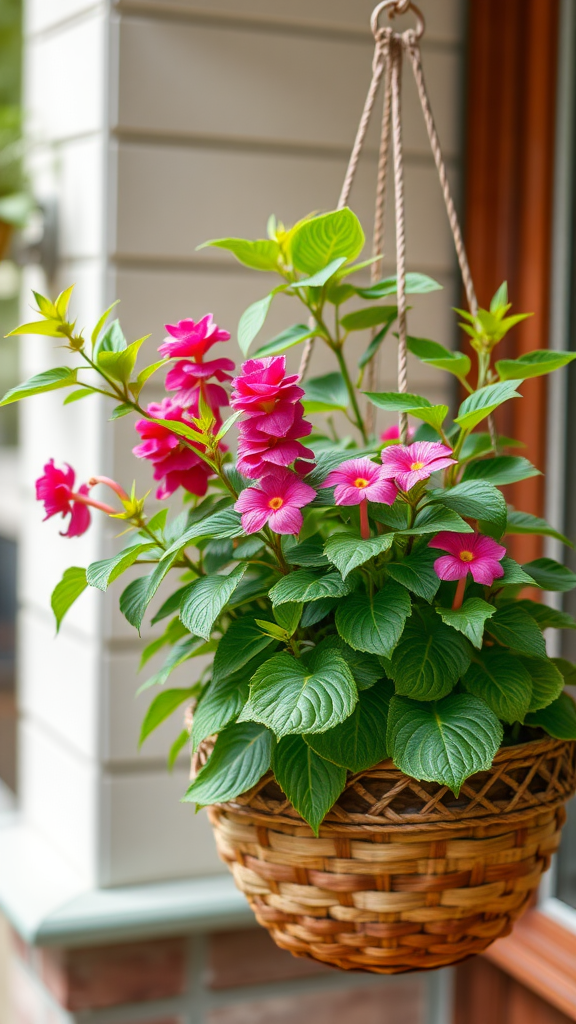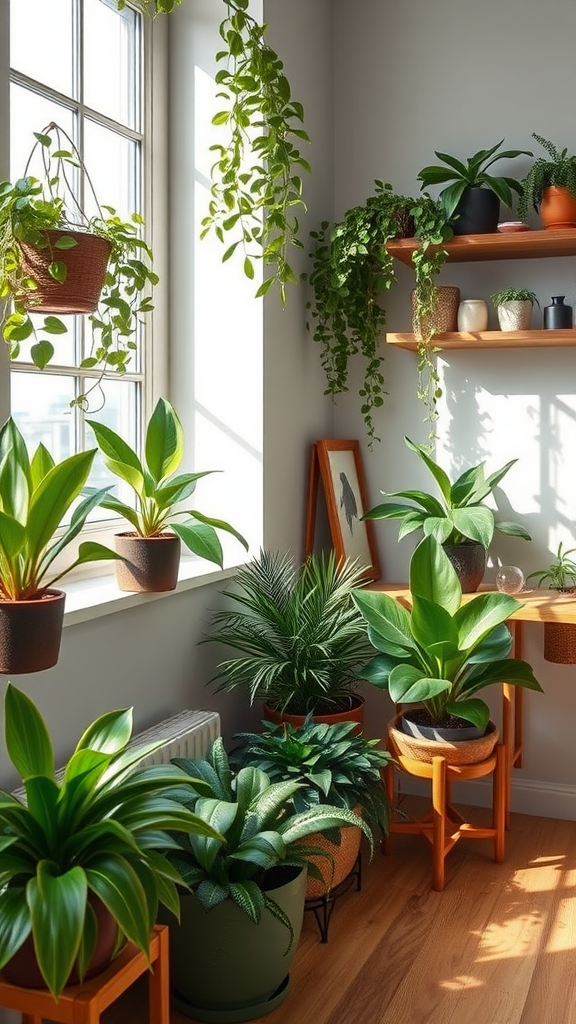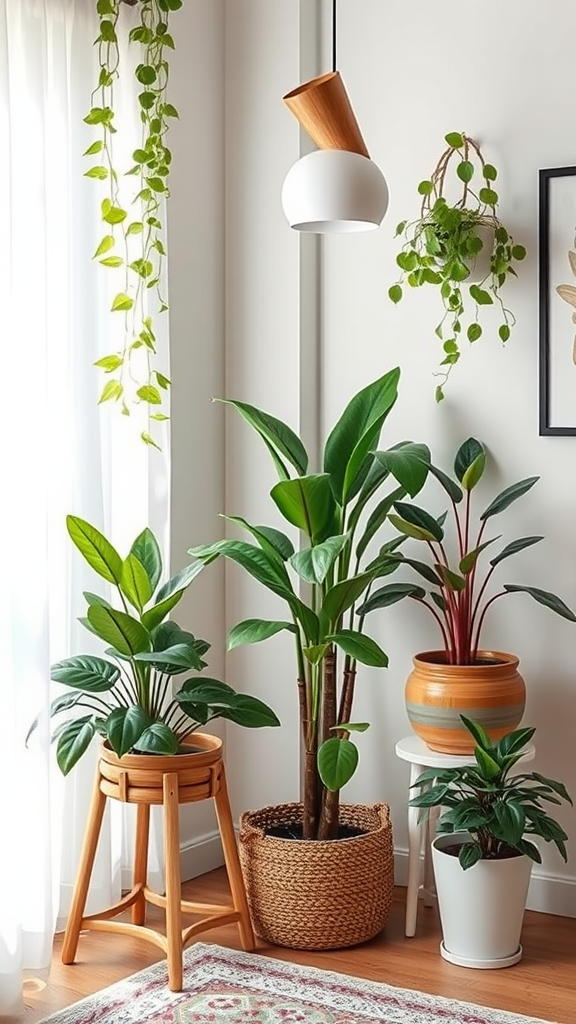Essential Care Tips for Your Monstera: Watering, Light, and Soil Needs
Monstera plants are popular houseplants known for their stunning, fenestrated leaves and tropical vibe. Proper care is essential to keep your Monstera thriving. In this guide, we will focus on three crucial aspects: watering, light, and soil needs.
Watering Your Monstera
Watering is one of the most critical factors in caring for your Monstera. Here are some essential tips:
- Check the Soil: Before watering, always check the moisture level of the soil. Stick your finger about an inch deep into the soil. If it feels dry, it’s time to water.
- Watering Technique: Water your Monstera thoroughly until you see excess water draining from the bottom of the pot. Make sure to use room temperature water, as cold water can shock the roots.
- Frequency: During the active growing season (spring and summer), water your Monstera every 1-2 weeks. In the fall and winter, reduce watering to every 2-3 weeks, depending on the conditions.
- Avoid Overwatering: It’s crucial not to overwater your Monstera, as this can lead to root rot. Always allow the top inch of soil to dry out before watering again.
Light Requirements for Your Monstera
Your Monstera’s light exposure directly impacts its health and growth. Here’s what you need to know about providing the right light conditions:
- Bright, Indirect Light: Monstera plants thrive in bright, indirect sunlight. A spot near a window with filtered light is ideal, as direct sunlight can scorch the leaves.
- Low Light Conditions: While Monsteras can tolerate low light, they may grow slower and produce fewer leaves. If your plant is in a darker room, consider rotating it closer to a light source every few weeks.
- Signs of Poor Light: If your Monstera has leggy growth or its leaves are small and less vibrant, it might not be getting enough light. Move it to a brighter spot to encourage growth.
- Seasonal Changes: Remember that light conditions change with the seasons. You may need to adjust your Monstera’s position to ensure it gets adequate light year-round.
Choosing the Right Soil
The right soil plays a vital role in your Monstera’s overall health. Here’s how to choose and maintain soil for your plant:
- Soil Type: A well-draining potting mix is best for Monsteras. Look for a mix designed for tropical plants, or create your own by combining standard potting soil with perlite or orchid bark for improved drainage.
- pH Levels: The ideal pH for Monstera soil is between 5.5 and 7.0. Most regular potting mixes fall within this range, but you can check by using a pH testing kit if needed.
- Repotting: As your Monstera grows, it will need repotting every 1-2 years. When repotting, choose a pot that is one size larger and refresh the soil to ensure optimal growth conditions.
Other Care Tips
To ensure your Monstera flourishes, consider these additional care tips:
- Humidity: Monsteras thrive in humid environments. If your home is dry, consider misting the leaves or using a pebble tray filled with water to increase humidity levels.
- Fertilizing: Feeding your Monstera during the growing season can encourage fuller growth. Use a balanced liquid fertilizer every 4-6 weeks during spring and summer, and reduce fertilization in fall and winter when growth slows down.
- Pests: Check your plant regularly for pests like spider mites or mealybugs. If you notice any, wash the leaves with water or use insecticidal soap.
By focusing on proper watering, light, and soil needs, you’ll set your Monstera up for success and enjoy its remarkable beauty for years to come.
Common Monstera Problems and How to Fix Them
Monstera plants are adored for their beautiful leaves and easy-care nature, but sometimes, they can face a few common issues. Understanding these problems is crucial for keeping your Monstera healthy and thriving. Here are some of the most frequent concerns and how to effectively address them.
Yellowing Leaves
One of the most common problems you might notice is yellowing leaves. This can indicate several issues:
- Overwatering: If the soil stays soggy, the roots can suffocate. Make sure your pot has drainage holes and that you allow the top inch of soil to dry out before watering again.
- Underwatering: Conversely, if the soil is too dry, the leaves may also turn yellow. Feel the soil and water the plant if it feels dry a couple of inches down.
- Light Levels: Insufficient light can also cause yellowing. Move your Monstera to a brighter spot, but avoid direct sunlight, which can scorch the leaves.
Browning Leaf Edges
Browning edges on Monstera leaves are not uncommon and can result from:
- Low Humidity: Monstera plants love humidity. If your home is dry, consider misting the leaves or placing a humidifier nearby.
- Water Quality: High fluoride or chlorine levels in tap water can cause leaf damage. Use distilled or rainwater if possible.
Pest Infestation
Your Monstera can also attract pests like spider mites, mealybugs, and aphids. If you notice tiny webs, cotton-like lumps, or a sticky residue on the leaves, you might have a pest problem. Here are effective solutions:
- Insecticidal Soap: Spray the affected areas with insecticidal soap. This will help to eliminate most pests without harming the plant.
- Neem Oil: Another effective remedy is neem oil, which acts as a natural pesticide. Mix it with water and apply it using a spray bottle.
- Manual Removal: For larger bugs, you can often just wipe them off with a damp cloth.
Dropping Leaves
When Monstera leaves start falling off, it can be alarming. Common causes include:
- Stress from Change: If you recently moved your plant to a new location or repotted it, it may be adjusting. Give it time to settle.
- Temperature Changes: Sudden changes in temperature can shock the plant. Keep it away from drafts and heaters.
Slow Growth
If your Monstera isn’t growing as quickly as you’d like, several factors could be at play:
- Nutrient Deficiency: Make sure you’re fertilizing your plant during the growing season. A balanced liquid fertilizer every 4-6 weeks can give it the nutrition it needs.
- Potted Roots: If your Monstera has become root-bound, it may be time to repot into a larger container to give it more room to spread out.
Leaf Curling
Curling leaves can often indicate distress. The primary reasons include:
- Water Issues: Just like yellowing leaves, curling can signal either overwatering or underwatering. Always check the soil moisture before watering.
- Environmental Stress: Check the plant’s environment. If it’s too hot or too cold, the leaves may curl. A consistent temperature of about 65-85°F (18-29°C) is ideal for Monstera.
Root Rot
Root rot is one of the worst problems a Monstera can face; it often results from overwatering. Signs include:
- Soggy Soil: If the soil remains wet and has an unpleasant odor, check the roots.
- Discolored Roots: Healthy roots are white and firm. Brown, mushy roots indicate rot. Cut off the affected areas and repot in dry, fresh soil.
By addressing these common issues as they arise, you can ensure your Monstera remains a vibrant, lush addition to your home. Regularly inspect your plant and keep an eye on its environment to prevent these problems from occurring in the first place. With just a little attention and care, your Monstera will thrive, contributing its stunning foliage to your living space.
Conclusion
Caring for your Monstera doesn’t have to be overwhelming. By applying essential care tips like proper watering, providing the right light, and using suitable soil, you can create an environment where your plant thrives. Remember, Monsteras love humidity, so placing your plant in a spot with good airflow and moisture can enhance its health. Balancing these basic needs will help your Monstera grow lush and vibrant.
Awareness of common Monstera problems is equally important in keeping your plant healthy. Whether it’s yellowing leaves from overwatering or brown tips indicating low humidity, identifying issues early can help you address them swiftly. Learning to recognize the signs of distress is key to successful plant care. If you notice pests or diseases, treat them promptly to prevent spreading.
Ultimately, nurturing your Monstera involves a mix of attentive care, environmental awareness, and timely interventions. Enjoy the journey of watching your plant grow and adapt to your home while absorbing its beauty and charm. With the right approach, you’ll not only support your Monstera’s growth but also enhance your living space with nature’s elegance. Happy gardening!





